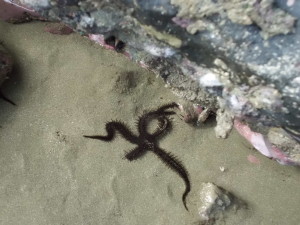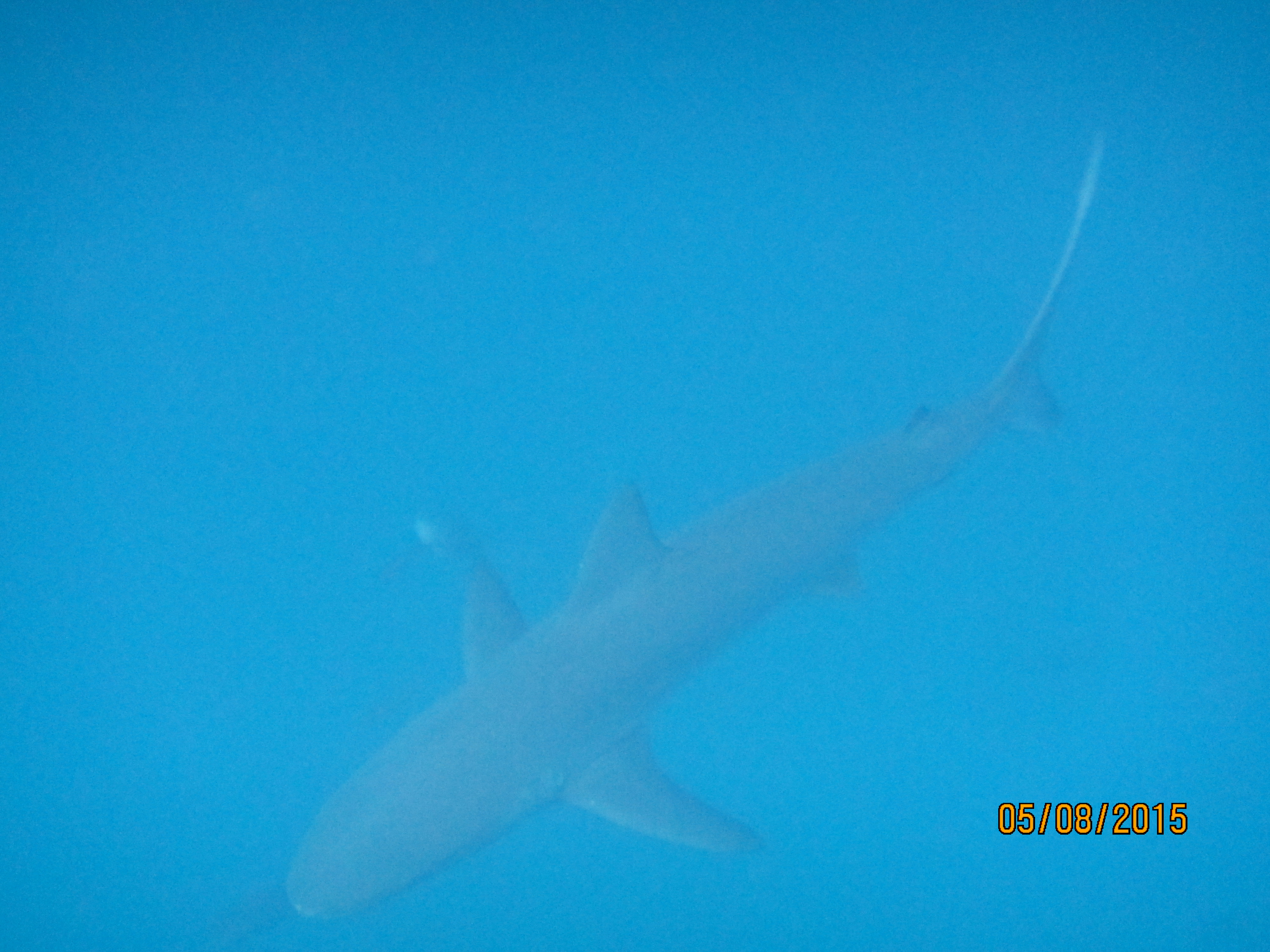
Although I’ve actually never tried, I’m pretty sure I could sprint on water if push comes to shark, err, shove. My fear of sharks is bigger than your fear of anything. Just to give you an idea of what I’m dealing with.
The kicker is that I absolutely love being in the water. Swimming is as close to meditation as I get, snorkeling is my happy place, Sylvia Earle is one of my heroes (learn about her Mission Blue Alliance), and I feel most at home standing next to bodies of water. Also, there is nothing better than exploring tidal pools for the unimaginable.
As children, my sister and I used to swipe our nets along the bellies of floating piers to see what lived just out of our sight. At night, we leaned over the edges with flashlights to peek around. We witnessed tiny crabs, iridescent grass shrimp, sleek gar fish, coy anemones, abundant seaweed, creepy eels, and phosphorescent jelly fish. Thankfully, we never saw sharks.
While snorkeling I prefer to stay close to shore, for a quick escape to land just in case. I’m not embarrassed about snorkeling in two feet of water with my mask and fins, eyeballing schools of tiny silver fish and clumsy hermit crabs who are usually passed up for the much hipper reef inhabitants.

My friends just got back from a once-in-a-lifetime trip to the Galapagos Islands, via National Geographic. I happily swiped through their Facebook photos liking every single one, until I saw the photo of a shark. They recounted seeing several sharks while snorkeling, and it was NO BIG DEAL. Jen reassured me these reef sharks were not carnivorous sharks. So they eat plants, I said, got it. They don’t really eat plants. She was over-reassuring me that I would not be a meal. The whitetip reef sharks snack on other fishes and crustaceans, and prefer not to chomp on humans. Unfortunately, they still LOOK like sharks. There are 30 species of sharks off the Galapagos Islands, making the location a great place to get to know these terrifying and awesome hosts.
My goal is to eventually learn how to scuba dive (and generally be more comfortable in the water), but that pesky little fear of sharks is in the way. The Nat Geo trip sounds like it could be a productive start to overcoming my fears, but also expensive.
Another way I’m working on my fear is by getting to know more about sharks. I’m now one of @MaryLeeShark‘s 70,000+ followers on Twitter. Mary Lee is a great white that @OCEARCH has been tracking and studying. The personification thing does wonders for phobias, although I still hope she will ping nowhere near Chincoteague, VA in late June. While I think I could eventually swim next to a reef shark, I’m definitely okay with never meeting a great white in person. Thank goodness for social media.
If you love the beach but are nervous about swimming where you can’t see your feet, this list from the Florida Museum of Natural History shows just how unlikely you are to be attacked by a shark anywhere in the world. If we think about the number of people in the water swimming, snorkeling, and diving at any given summer moment, and compare with the number of attacks on this list, we can all feel a little calmer. Not that I’m going to dangle my toes in the water in Chincoteague if Mary Lee is pinging anywhere near the Delmarva Peninsula. The Atlantic Ocean isn’t big enough for the both of us.
